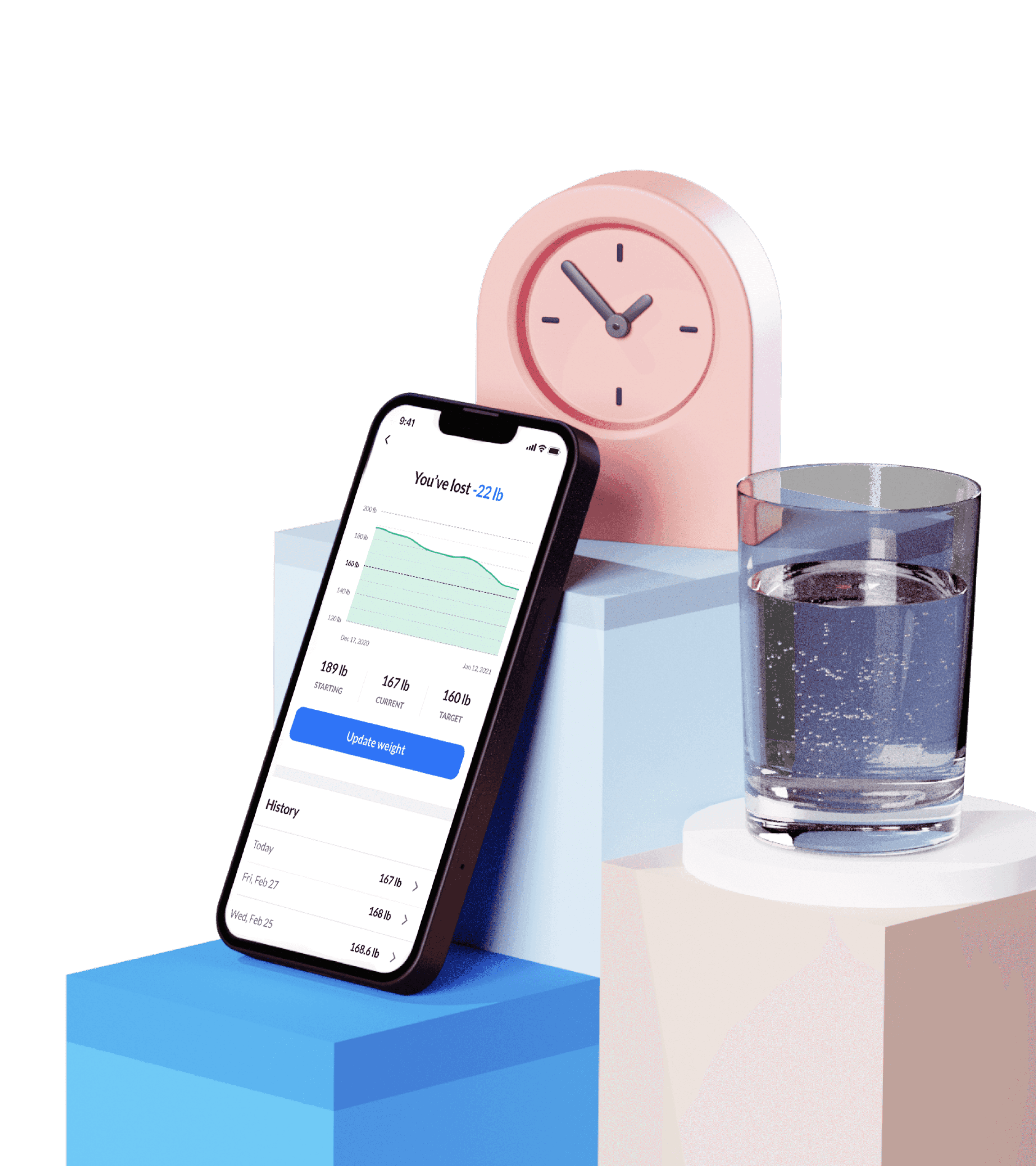Contents
What Is the Pegan Diet?
The pegan diet combines paleo and vegan diets. The idea is to consume as many nutrient-dense healthy foods as possible while avoiding heavily processed foods.
The vegan diet is a popular take on the vegetarian diet wherein you cannot eat any animal-derived foods, including meat, fish, dairy, and eggs. The paleo diet is based on the typical hunter-gatherer diet and focuses on whole foods, like lean meat, fruits, vegetables, and nuts.
Combining the vegan and paleo diets may seem extreme and quite restrictive, but, unlike the paleo and vegan diets on their own, the pegan diet allows you to eat meat, fish, grains, and legumes to be eaten.
The diet is not meant to promote weight loss but is instead seen as a way of life. It is designed to be a sustainable and nourishing way to eat all of the time, forefronting whole foods over refined and processed foods.
A pegan diet meal plan consists of lots of plant foods, like fruit, veg, nuts, and seeds, along with responsibly-sourced protein, like grass-fed beef and wild-caught fish.
Take a
1-minute quiz
and discover how much weight you can lose with DoFasting!

Recommended Foods for the Diet
This diet comes with lots of proven benefits which is why it is growing in popularity, even though it is relatively new. Below we’ve summarized the foods that are recommended for consumption in the diet.
Fruits and vegetables
Fruit and vegetables should make up at least 75% of your consumption when on the pegan diet. It is recommended that you stick to low-glycemic fruits and non-starchy vegetables to maintain healthy blood sugar levels.
Berries are a good fruit option for a pegan diet. As for vegetables, cauliflower, cabbage, eggplant, spinach, and zucchini are a great choice.
Starchy vegetables and fruits with a higher GI are allowed as an occasional treat but should be kept to a minimum as much as possible.
Eating more fruits and vegetables helps to boost your health by ensuring you nourish your body with all the vitamins and minerals it needs each day and by increasing your dietary fiber intake, boosting your digestive health.
Grass-fed meat and eggs
Grass-fed beef, other sustainable meat sources, and eggs are recommended as responsible sources of protein in the pegan diet. You should get around 20–25% of your caloric intake from this kind of protein.
Sustainably raised meat and eggs are recommended over processed meats that contain food additives. This is because sustainably raised meats tend to have more nutrients, including omega-3s, and may help to lower blood pressure.
Wild-caught fish
Along with grass-fed options, the pegan diet allows for the consumption of wild-caught fish with low mercury content.
Fish like wild salmon and sardines are good options for the pegan diet. Wild-caught fish varieties tend to have fewer contaminants than farmed fish, making them a more natural source of protein.
Additionally, mercury increases the body’s production of free radicals, which leads to further oxidative stress in the body. As the pegan diet is designed as an anti-inflammatory diet, it is best to choose low-mercury fish options.
Healthy fats
Healthy fats have become much more popular in recent years. After decades of believing all fats are bad, research has now shown that some fats actually have the ability to boost our health.
Healthy fats, or unsaturated fats, include olive oil, avocado oil, and some of the fats found in nuts.
Healthy fats have been associated with better heart health, reducing inflammation, and lowered blood pressure and cholesterol levels.
Nuts and seeds
Nuts and seeds are a good source of fats, protein, dietary fiber, and a range of vitamins and minerals.
Good nut and seed options the pegan diet offers include:
- Almonds
- Pistachios
- Walnuts
- Flaxseeds
- Chia seeds
- Pumpkin seeds
It is important to avoid peanuts and refined seed oils as they are classed as processed foods.
Foods To Avoid
Though you should avoid the foods listed below, the pegan diet is not as restrictive as other diets. The foods below may be consumed in moderation on the pegan diet but shouldn’t make up large portions of your meals.
Dairy products
While the pegan diet forefronts plant-based foods, there are some dairy products you can consume in moderation on this diet. These include:
- Grass-fed butter
- Cheeses and milk from sheep and goats
Many cow’s milk dairy products are completely banned.
Dairy is one of the biggest sources of saturated fats in the western diet and has been linked to the development of heart disease, type 2 diabetes, and other chronic illnesses. It is also thought to be an inflammatory food due to its high saturated fat content.
Sticking to more plant-based foods and restricting dairy on the pegan diet is best for your overall health.
Grains
All gluten-containing grains are banned on the pegan diet, though some gluten-free whole grains are permitted.
Grains are thought to reduce nutrient absorption, due to the anti-nutrient compounds in grains. In addition, they have been linked to some digestive issues and can impact blood sugar levels negatively.
Legumes
Unlike many other plant-based diets, the pegan diet does not include many legumes. Legumes are thought to increase your blood sugar levels and as such, should be kept to a minimum. You may eat lentils in moderation.
Sweets
Sugar in general is meant to be avoided on the pegan diet, whether refined or not. This means sweets and candy should not be eaten.
Sugar has been linked to a range of health problems, including obesity and dental issues. It is best avoided if you’re trying to eat a healthy diet.
Refined oils
Refined oils are completely excluded from the pegan diet. Refined oils include canola oil, sunflower oil, soybean oil, and corn oil.
These kinds of oils are very high in omega-6 fatty acids. Increased consumption of these fatty acids has been linked to inflammation.
Take a
1-minute quiz
and discover how much weight you can lose with DoFasting!

3 Possible Health Benefits of the Pegan Diet
The pegan diet has a huge focus on increasing your intake of fruit and vegetables. This, in itself, is good for your health and is probably one of the best traits of this diet.
The pegan diet is thought to come with various benefits for your health and we’ve taken a look at some of them below.
1. Promotes weight loss
Though not designed as a weight-reduction method, the diet is thought to help you lose weight.
As the diet consists of lots of fruit and vegetables, you naturally increase your intake of dietary fiber. This can help you feel fuller for longer and stop you from snacking too much. This prevents overeating and weight gain.
In addition, the increase in healthy fats can help you to feel more satiated too.
2. Good for your heart
The emphasis the diet places on healthy and unsaturated fats is thought to promote good heart health.
Healthy fats have been linked to reduced cholesterol levels, reducing your risk of developing cardiovascular diseases, like heart disease.
3. Good for gut health
The high-fiber eating pattern that is promoted in this diet helps to keep your gut in optimal health. Fiber helps your digestive system to work more effectively and prevents digestive issues like bloating and constipation.
Drawbacks and Risks To Consider
Though the pegan diet focuses on eating nourishing food from each of the food groups, there are some potential drawbacks to consider.
Missing out on the health benefits of certain food groups
As some foods are restricted in the diet, including whole grains, cow’s milk products, and some legumes, you may miss out on nutrients that your body needs.
Cutting out dairy and whole grains could result in a deficiency of B vitamins and dietary fiber. You can counteract this by supplementing your diet and ensuring you eat enough vegetables to meet your daily fiber intake needs.
It can lead to an unhealthy relationship with food
As with many restrictive dieting methods, the pegan diet has the potential to create an unhealthy relationship with food. This could lead to disordered eating and could be dangerous for anyone who has previously suffered from an eating disorder.
If you’re looking into this kind of diet and have suffered an eating disorder, it is best to speak with a registered dietitian or your healthcare provider before trying it.
It can be expensive
This diet focuses a lot on organic, sustainably-raised, and wild-caught foods. While these kinds of foods have lots of potential health benefits, they can be much more expensive than common produce.
Both the vegan and the paleo diets are though more inaccessible than others due to the restrictive nature of even a simple eating plan on them. Adding a focus on organic foods increases this cost too.
Choosing foods that have been grown and raised organically can help you avoid the contaminants found in conventionally grown produce, but it will set you back a fair bit too. This is something to consider before starting pegan eating.
Combine the Pegan Diet With Intermittent Fasting for Faster Results
Eating the pegan way lends itself very well to the intermittent fasting diet. Intermittent fasting is a method of dieting that involves eating and fasting periods. Fasting periods can vary from 12 hours, like on the 12-hour fasting method, to 16 hours on the 16:8 method, to two non-consecutive days every week, like on the 5:2 method.
Intermittent fasting comes with many overall health benefits, including weight reduction, increased longevity, better heart health, and more focus and mental clarity. It is an extremely popular diet and is favored by those who have struggled with calorie restrictions in the past.
Unlike other diets, intermittent fasting restricts when you can eat rather than what you can eat.
Combining intermittent fasting with eating the pegan way means nourishing your body with all of the nutrient-dense foods of the pegan dieting method while creating a natural calorie deficit through long periods of fasting.
With the rise in popularity of intermittent fasting has come the advent of fasting apps, like the DoFasting app, which can help you to stay on track with this dieting method.
The app helps you to track your food and your calories, which would help you to eat pegan-suitable foods during eating windows, and provides a range of fasting-friendly workouts to help your get more active.
Check out the DoFasting app now to see how it could help you out.
Take a
1-minute quiz
and discover how much weight you can lose with DoFasting!

Conclusion
Pegan eating combines vegan and paleo methods of eating, focusing on plant-based, nutrient-rich foods and restricting processed and sugary foods. It offers benefits, including good heart health and good gut health, and can help you to lose weight too.
This diet lends itself very well to intermittent fasting and you should consider combining the two for faster results.
See how DoFasting will improve your life
Find out what works for you with this 60-sec quiz approved by our experts and get your personal revolutionary fasting assistant.
Start the Quiz














